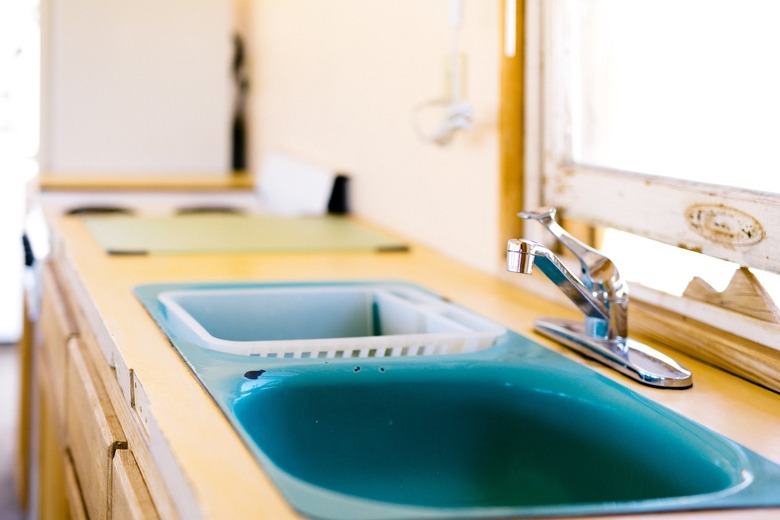How To Change A Single Sink To A Double Sink
As long as you have the space for it on your countertop, a double sink really is twice as good as a single one. It makes washing dishes easier, and if you don't like washing dishes, it provides extra space where you can let them pile up. In the bathroom, a double sink provides his and her washing areas or a dedicated vessel for soaking linens.
The procedure for changing a single sink to a double is a little more complicated than simply cutting a bigger hole. The main questions you're likely to have will probably concern the drain pipes. For example, you may be wondering whether each sink requires its own P-trap and what you're going to do with the garbage disposal and dishwasher drain hose. These and other issues are usually easy to resolve.
Remove the Old Kitchen Sink
Remove the Old Kitchen Sink
After you've cleared out the sink cabinet to give yourself plenty of room to work, turn off the water shutoff valves, open the faucet to drain it and disconnect the faucet hoses. Disconnect the dishwasher drain hose by loosening the clamp and pulling the hose off the tee on the sink tailpiece or the garbage disposal.
Disconnect the P-trap from the sink tailpiece or garbage disposal outlet by loosening the compression fitting, using pliers if the nut is too tight to turn by hand. It's a good idea to remove the trap altogether, because you'll probably have to modify it to accommodate two sink drains. You can re-use the old trap, and you don't have to add another one, but you'll need to add some new pipes and fittings.
Once everything is disconnected, loosen the clips holding the old sink using a screwdriver and cut through the caulk between the rim and the top of the counter with a knife. Push the sink up to free it from the caulk, then lift it out and take it someplace where you can remove the faucet and sink strainer.
Modify the Sink Hole
Modify the Sink Hole
Your new double sink is probably longer than the old one, so you'll need to make a wider hole. If the drain pipe's waste outlet in the wall is lined up with the center of the sink, it's a good idea to cut half the extra width from one side of the countertop and the other half from the other side to preserve this symmetry and make it easier to hook up the P-trap. After you're done, test the sink to make sure it fits, then clean up any caulk residue left over from the old sink.
Changing Single Sink to Double
Changing Single Sink to Double
It's easier to install the faucet, faucet hoses, sink strainer assembly and garbage disposal bracket to the new sink before you drop it in. Apply a bead of caulk around the rim, set the sink in place and secure it with mounting clips. Mount the garbage disposal, if there is one, and you're ready to hook up the P-trap.
In most cases, you'll be running horizontal pipes with a downward slope of 1/4 inch per foot from each drain tailpiece — or from the garbage disposal — to a tee that leads to the trap. Note: A common mistake when connecting two bathroom sinks to one drain is the use of a sanitary tee for this connection. Lincoln County, Washington reminds you that you need a long sweep double wye for this connection. You might want to consult a double sink plumbing diagram to make sure you do it right.
